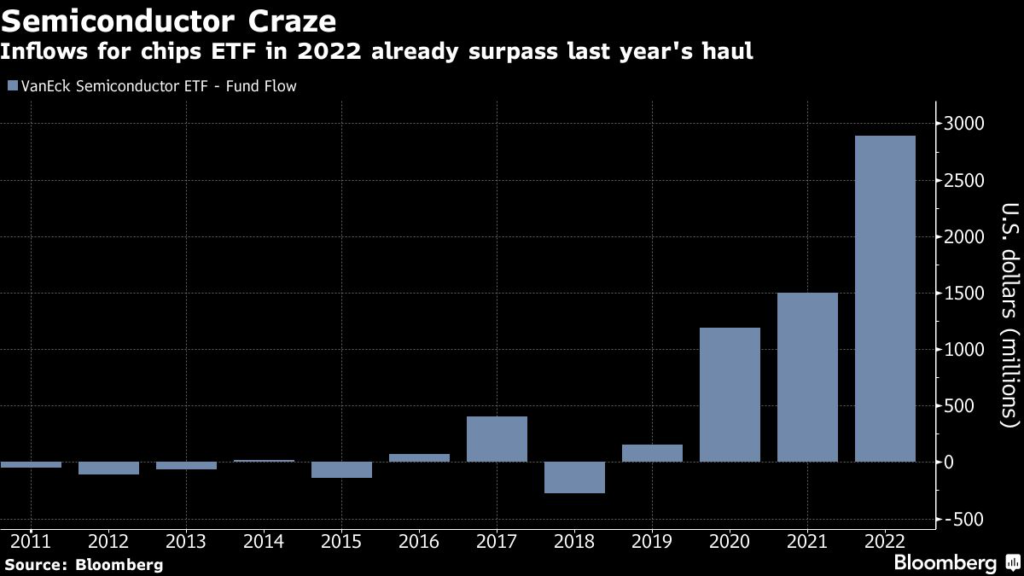(Bloomberg) — War, soaring energy prices and central-bank badgering may be testing the resolve of dip-buying bulls. But none of that has yet to completely break it.
While this week saw the hottest readings on inflation in four decades, it also featured conspicuous signs of resilience, including a bounce on Wednesday that pushed the S&P 500 up the most since last month. Two-year Treasury yields eased in three of four sessions, while industrial stocks held firm and volatility benchmarks were unmoved.
The buoyancy is notable coming amid an escalating campaign of hawkishness by Federal Reserve speakers ahead of a policy decision on May 4. Even inflation that is exceeding earlier forecasts by “a ludicrous degree” is being taken in stride — mostly — by traders, who consider it already baked into asset prices, according to fund manager Michael Shaoul.
“We were not surprised either by the data released or the market’s reaction,” Shaoul, chief executive officer at Marketfield Asset Management, said in a note. “Most investors and advisers probably feel that they have already made a very large adjustment to their expectations in recent weeks, and felt no need to react further.”
Over the four days, the S&P 500 slipped 2.1% for a second straight weekly retreat. The Dow Jones Industrial Average fell 0.8%, while the Nasdaq 100 lost 3%. The CBOE Volatility Index edged up to 22.65. U.S. markets are closed Friday for a holiday.
Investors entered the week awaiting readings on inflation that marked the last big data points before the Fed’s meeting. U.S. consumer prices in March surged by the most since 1981, according to data Tuesday, reinforcing pressure on the Fed to hike rates. Stocks rallied for several hours afterward, buoyed by lower-than-forecast readings on core components that omit food and energy. Treasury two-year yields — sensitive to monetary policy and inflation expectations — eased sharply after the report.
Prices paid to U.S. producers, meanwhile, also climbed in March from a year ago, beating all estimates, the government said Wednesday. Stocks jumped and short-dated Treasury yields slipped again as investors clung to hopes that reading marked the peak in inflation.
“If I had told you in advance that we would receive worse-than-expected CPI and PPI readings in rapid succession, both to levels that haven’t been seen in decades, would you have predicted that rates would pull back sharply and stocks would rally?” said Steve Sosnick, chief strategist at Interactive Brokers LLC.
To be sure, not everyone found the news reason to rest easy. Bank of America, for its part, warned clients not to be fooled by the softer reading, calling it a “head-fake.”
“It is a mistake to focus on the traditional measure of core inflation that excludes food and energy,” economists led by Ethan Harris said in a note. “The problem with this approach is that, depending on what you pluck out, you can come up with almost any number.”
For John Lynch, chief investment officer at Comerica Wealth Management, the two primary boosters for stocks these past years — the Fed and low consumer price inflation — are now serving as headwinds that will eventually pressure margins and valuations.
“The persistent inflationary pressures may continue to weigh on investor sentiment,” Lynch said in a note. “We continue to favor value and cyclical sectors and suspect more active strategies will outperform passive as companies, and investors, adjust to these changes.”
Favor cyclicals is what investors did in the past week. Billions were poured into exchange-traded funds focused on semiconductor stocks as they wagered the industry will rebound from the supply-chain snags and chip shortages. Materials producers and industrial stocks led gains in the period.
Semiconductor ETFs saw roughly $1.7 billion of inflows, according to data compiled by Bloomberg. Since the beginning of the year, the funds have collected $7.8 billion, about as much as the past two years combined. The influx of cash into semiconductors, a cyclical sector that typically does well when the economy is doing well, highlights the faith of investors that the industry will recover from the supply-chain turmoil exacerbated by the pandemic.
Other economic reports were friendlier to bulls, among them U.S. retail sales, which ticked higher in March thanks to an 8.9% jump in spending for gasoline. The data offered a glimmer of optimism that Americans are still willing to spend despite the rising prices of goods and services, even as calls for recession grow louder in the near-term. Even if one does arrive, timing an economic downturn is difficult.
“Recession is more likely than a soft landing. That doesn’t mean that imminently the market goes down,” Liz Ann Sonders, chief investment strategist for Charles Schwab & Co., said by phone. “But assuming risk of recession continues to go up and doesn’t come back down, you can at least assume there’s going to be more volatility in the market.”
At Jefferies LLC, chief economist Aneta Markowska monitors a proprietary U.S. economic activity index made of up components including restaurant bookings, retail web traffic and transit data, among others. Her gauge has risen above levels seen a month ago, and Markowska notes consumption and movement factors have made notable gains, though she says housing has weakened.
“So, although the economy appears to be treading water on the surface, there are continued signs of normalization under the hood,” she wrote in a note. “Consumer activity continues to be very resilient in the face of higher energy costs.”
More stories like this are available on bloomberg.com
©2022 Bloomberg L.P.











